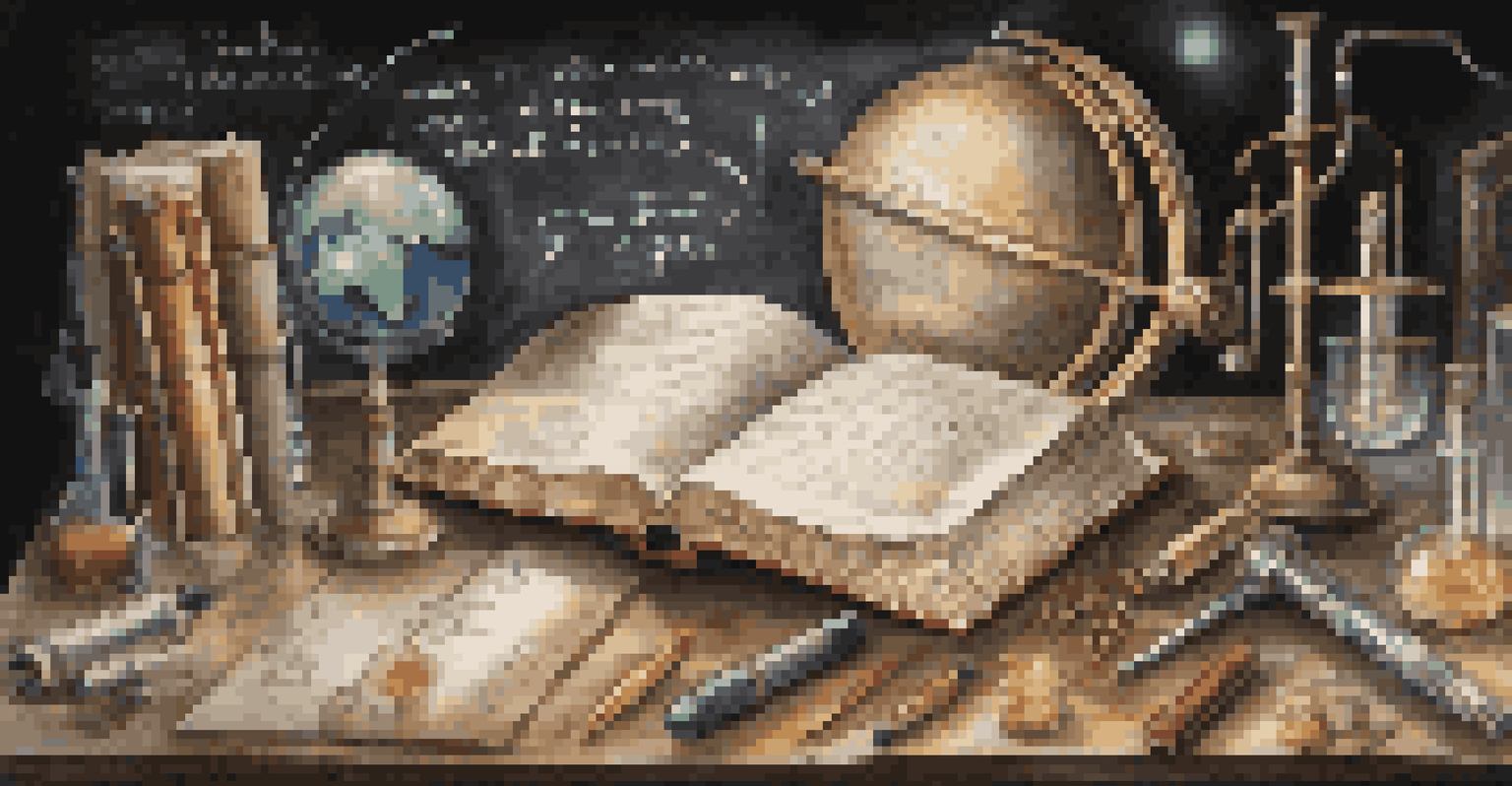Integrating Literature and Science for Enhanced Learning

The Intersection of Literature and Science: A Synergistic Approach
Literature and science may seem like distant disciplines, but they share a rich history of interconnection. Both fields seek to understand the world around us, albeit through different lenses. By integrating these two realms, educators can foster a more holistic learning experience that engages students on multiple levels.
Science and literature are not separate worlds; they are two sides of the same coin.
Imagine reading a novel that explores the complexities of human emotions while simultaneously learning about the biological processes that underpin those feelings. This interplay can enhance comprehension and retention, as students see real-world applications of scientific concepts in relatable narratives.
Moreover, blending literature with science encourages critical thinking and creativity. Students can explore ethical dilemmas presented in science fiction or analyze character motivations grounded in psychological principles, making learning both enjoyable and intellectually stimulating.
Benefits of Integrating Literature into Science Education
Integrating literature into science education offers numerous benefits, particularly in enhancing student engagement. When students encounter scientific principles through captivating stories, they are more likely to develop a genuine interest in the subject matter. This enthusiasm can lead to deeper exploration and understanding of scientific concepts.

Additionally, literature serves as a powerful tool for developing empathy. Reading about scientists’ struggles, triumphs, and ethical quandaries can humanize the field of science, making it more accessible to students. This human connection fosters a sense of responsibility and curiosity about the world, crucial traits for future scientists.
Literature Enhances Science Learning
Integrating literature into science education fosters greater student engagement and understanding through relatable narratives.
Furthermore, literature can help bridge gaps in understanding complex scientific theories. By presenting scientific ideas in a narrative format, students can better grasp abstract concepts, leading to a more comprehensive understanding of the material.
Creative Teaching Strategies for Literature and Science
One effective teaching strategy is to use thematic units that combine literature with scientific topics. For instance, studying climate change through the lens of environmental literature can help students grasp the urgency of the issue while engaging with compelling narratives. This approach not only enhances understanding but also fosters a sense of agency in addressing real-world challenges.
The greatest scientists are artists as well.
Another strategy is to encourage students to create their own stories based on scientific principles. By writing short stories or poems that incorporate scientific themes, students can explore their creativity while solidifying their understanding of complex concepts. This active engagement makes learning more memorable.
Role-playing is another dynamic method to integrate literature and science. Students can assume the roles of historical scientists or fictional characters facing scientific dilemmas, prompting them to think critically and collaboratively about solutions. This interactive learning experience can lead to greater retention and enthusiasm.
Using Literature to Explore Scientific Ethics and Responsibility
Literature often delves into ethical questions that arise in scientific practice, making it a valuable resource for discussions about responsibility. Books like Mary Shelley's 'Frankenstein' provoke thoughtful conversations about the moral implications of scientific advancements. Engaging with such texts can help students grapple with the nuanced ethical considerations in today’s scientific landscape.
By examining literature that addresses scientific ethics, students can explore the consequences of scientific decisions in a safe environment. This not only enhances their critical thinking skills but also prepares them to navigate real-world dilemmas as future professionals in science or related fields.
Creative Strategies Foster Engagement
Using thematic units, storytelling, and role-playing encourages students to actively engage with scientific concepts.
Moreover, integrating these discussions into the curriculum can foster a sense of social consciousness. Students learn that science is not just about discovery; it also involves responsibility towards society and the environment, cultivating a generation of thoughtful and conscientious future leaders.
Fostering Collaboration Between Literature and Science Educators
Collaboration between literature and science educators is essential for successfully integrating these disciplines. By working together, teachers can develop interdisciplinary projects that enrich the curriculum and provide students with a more comprehensive understanding of topics. This collaboration encourages creative thinking and innovation in teaching methods.
For instance, literature teachers can collaborate with science instructors to design joint assignments, such as analyzing a scientific text through a literary lens or creating a literary response to a scientific phenomenon. Such projects not only deepen understanding but also promote teamwork among educators.
Furthermore, sharing resources and expertise allows teachers to create a more cohesive learning experience. Workshops and professional development sessions can facilitate these collaborations, equipping educators with the tools they need to effectively blend literature and science in their classrooms.
Real-World Examples of Successful Integration
Many schools are already successfully integrating literature and science, providing inspiring examples for others. For instance, programs that combine reading assignments with hands-on science experiments have shown promising results in student engagement and comprehension. These real-world applications highlight the benefits of this interdisciplinary approach.
Another noteworthy example is the use of graphic novels in science education. Titles that explore scientific concepts through engaging visuals and narratives can captivate students who might struggle with traditional textbooks. This method not only makes learning fun but also caters to diverse learning styles.
Collaboration Enriches Education
Collaboration between literature and science educators leads to innovative interdisciplinary projects that enhance learning.
Furthermore, schools that organize science-themed literary events, such as author visits or science fairs with literary components, create an exciting atmosphere that celebrates both fields. These initiatives illustrate the potential of blending literature and science to enrich the educational experience for all students.
Future Directions: Continuing to Integrate Literature and Science
As we look to the future, the integration of literature and science in education will likely become increasingly important. With the rapid advancement of scientific knowledge and technology, students need to develop not only technical skills but also critical thinking and creativity. Blending these disciplines can equip them with the tools necessary for success in an evolving world.
Educational institutions should continue to explore innovative ways to merge literature and science, such as incorporating digital storytelling or interactive media. These modern approaches can engage tech-savvy students and make complex subjects more accessible and enjoyable.

Ultimately, fostering a culture that values interdisciplinary learning will benefit students in numerous ways. By nurturing their curiosity and encouraging them to draw connections between literature and science, we prepare them to tackle the challenges of the future with confidence and creativity.